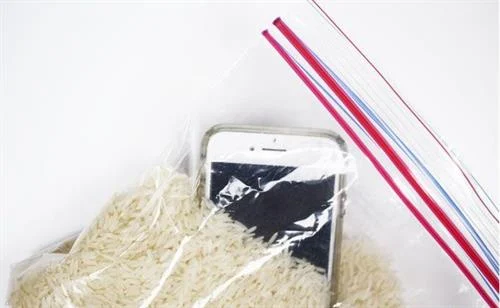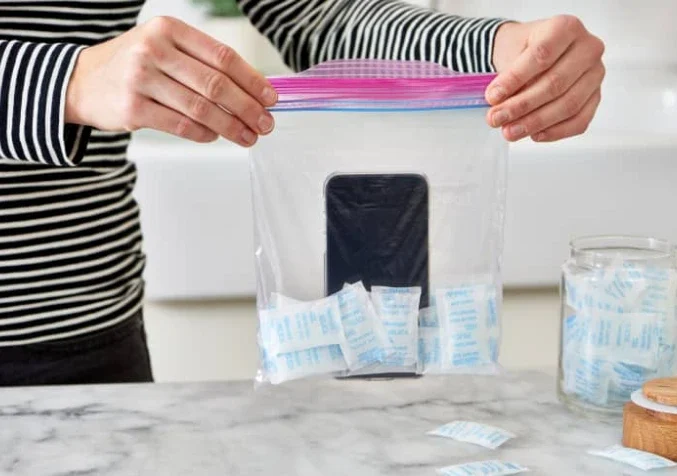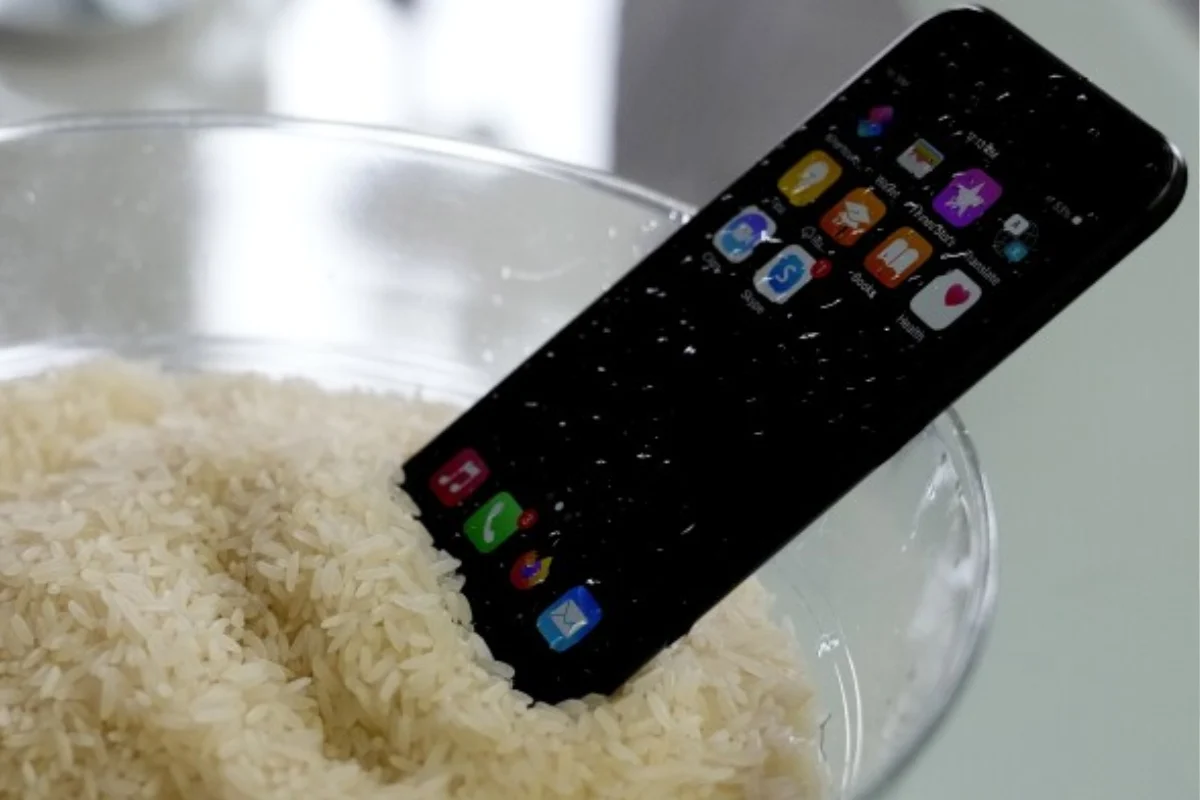When your phone takes an unexpected dive into water, panic often leads people to one go-to trick: dropping it into a bowl of uncooked rice. It’s a common household fix, passed down like folk wisdom, promising to dry your phone and save it from water damage magically.
But does rice really work, or are we just clinging to a convenient myth? While it might seem like a safe, low-effort solution, the truth is more nuanced.
In this guide, we’ll explain exactly how to use rice if you have no other options, but we’ll also explain why it’s far from the best method.
From smarter alternatives to long-term damage prevention, you’ll find everything you need to make an informed decision after a water mishap.
Step-by-Step: How to Use Rice to Dry a Wet Phone
If rice is your only option at the moment, here’s how to do it as safely as possible:
- Power off your phone immediately. Don’t press buttons or attempt to unlock it.
- Remove all accessories: case, screen protector, SIM card, and memory card.
- Wipe the surface gently with a lint-free microfiber cloth. Avoid using heat or shaking the device.
- Fill an airtight container or zipper bag with uncooked white rice (avoid flavored or enriched types).
- Submerge the phone completely in the rice, ensuring all sides are covered.
- Leave it in the container for at least 24 to 48 hours. The longer, the better.
- Afterward, remove the phone, check for moisture in the ports, and power it on.

Test functions like the display, speaker, and charging port carefully. If any function seems off, it’s best to consult a professional before continuing use.
While this method may draw out moisture, it doesn’t guarantee full recovery, especially if the internal components have already begun corroding.
Why Rice Isn’t the Best Solution
Although it’s better than doing nothing, rice is far from an ideal drying agent. It absorbs moisture slowly and passively, making it ineffective for deep internal drying, especially in modern, tightly-sealed smartphones.
- Low Absorption Power: Compared to silica gel or synthetic desiccants, rice pulls moisture out at a much slower rate.
- Can Introduce Dust or Starch Residue: Rice particles may release fine debris into headphone jacks or charging ports, making things worse.
- False Sense of Safety: Phones may appear dry externally while remaining damp inside, allowing corrosion to quietly spread.
Tech experts and repair professionals generally don’t recommend rice, especially when faster, safer alternatives exist. Relying solely on rice may delay proper repair and lower your phone’s long-term survival chances. Think of it as a last resort, not a dependable recovery method.
Better Alternatives to Rice
If you’re serious about drying your wet phone effectively, a few readily available alternatives outperform rice by a long shot.
- Silica gel packets (those little pouches in shoeboxes) are highly effective at absorbing moisture.

- Synthetic desiccants designed for electronics can pull water faster and more thoroughly.
- Vacuum-sealed drying pouches specifically made for water-damaged phones are another good option.
These materials actively draw moisture from internal components without leaving dust or residue. They’re especially useful if you act quickly and avoid turning the phone on prematurely.
What to Do Instead of Just Using Rice
While rice may be convenient, there’s a smarter protocol to follow when your phone gets wet. Start by turning the phone off immediately. Do not press buttons or shake it. Remove any external components like the SIM card, case, and memory card.
Gently pat the phone dry with a lint-free cloth. Then, place it in a sealed container with a more efficient moisture absorber like silica gel or a specialty phone-drying pouch. Avoid hairdryers, ovens, or microwaves; they can cause more harm than good.
If available, consider taking your device to a repair shop within 24–48 hours. Professionals may use tools like ultrasonic cleaners or internal inspection scopes to prevent permanent corrosion.
Time is critical here. Moisture trapped inside can continue damaging sensitive circuits even if the phone looks fine on the outside. Proactive steps (not just rice) make the biggest difference in recovery.
When Rice Might Work (Optional Use Cases)
Rice may have a role in a pinch, just not as your first or best option. It can serve as a temporary measure if:
- You’re traveling or outdoors with no access to proper drying tools.
- You need to stabilize the phone while arranging better repair methods.
- The exposure was extremely minimal, like a drop of water or a quick splash.
In these cases, rice might help reduce surface-level moisture, but still follow it up with more reliable drying or inspection later. Use it as a placeholder solution, not your entire game plan.
Conclusion
Rice might be the internet’s favorite emergency trick, but it’s far from foolproof. While it can help a little in a tight situation, relying on it as your main recovery tool can leave your phone at risk of deeper, hidden damage.
Using proper desiccants, drying tools, or professional services always yields better results. If you’re interested in more reliable advice, check out our other blogs where we dive deeper into safe ways to rescue your wet phone, restore speakers, and avoid common mistakes.
Saving your phone isn’t about quick fixes. It’s about informed choices and acting fast the right way.

